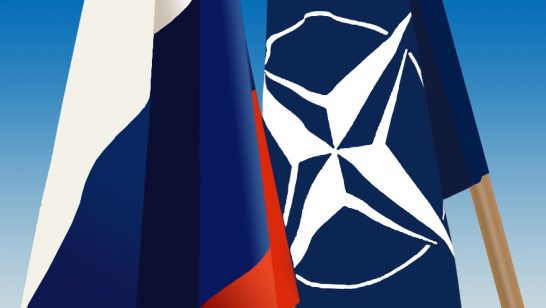
On 20 May, NATO concluded the 18-month-long Deterrence and Defence Posture Review (DDPR) process with a statement at its Chicago Summit. Apart from ‘acknowledg[ing] the importance of the independent and unilateral negative security assurances [NSAs] offered by the United States, the United Kingdom and France’, the DDPR broke little new ground on NATO’s nuclear posture, and in fact further entrenched the pledge made at the 2010 Lisbon Summit that, ‘as long as nuclear weapons exist, NATO will remain a nuclear alliance’.
In announcing that ‘the Alliance’s nuclear force posture currently meets the criteria for an effective deterrence and defence posture’, NATO has squandered a crucial opportunity to reduce nuclear weapons levels in Europe and decrease the number of nations that host nuclear weapons. This is an important consideration from the point of view of the Nuclear Non-proliferation Treaty (NPT), of non-nuclear weapons states concerned about further nuclear proliferation, and of NATO allies’ ability to speak with moral authority on NPT issues.
Beyond that, NATO has played directly into the hands of hardliners in the Russian Federation who refuse to discuss reductions in Russia’s 2000+ non-strategic nuclear weapons (NSNW) arsenal unless the U.S. withdraws its 180-odd NSNW from Europe and returns them to American soil.
The final DDPR document is relatively brief, 34 paragraphs containing just under 3000 words. By contrast, the 2010 Strategic Concept which launched the DDPR process was 1000 words and two pages longer. What disappoints is not the length of the document, however, but the lengths to which certain allies went in order to maintain NATO’s nuclear status quo. Observers had low expectations for the DDPR based on previous examples of, in particular, French intransigence, and unfortunately these expectations were fully met in Chicago.
One example of nuclear foot-dragging at NATO is the reaffirmation and deeper embedding into NATO doctrine of a demand for Russian reciprocity before further reductions in NATO NSNW can be contemplated. This insistence on reciprocity was first codified in Secretary of State Hillary Clinton’s ‘Five Principles’, elaborated at the Foreign Ministerial meeting in Tallinn, Estonia, in April 2010. The DDPR has stated this precondition in much more explicit terms, however.
Another disappointment came with the language in paragraph 30:
‘Allies believe that the Weapons of Mass Destruction Control and Disarmament Committee [WCDC] has played a useful role in the review and agree to establish a committee as a consultative and advisory forum, with its mandate to be agreed by the NAC following the Summit.’
The problems here are twofold: First, the WCDC is strictly a ‘talk shop’ with no control over or input into NATO’s nuclear planning processes. Secondly, the language cited above does not allow the existing arms control committee, the WCDC, to move forward – it specifies that ‘a’ committee may do so, and even then leaves open the prospect of a protracted fight over that committee’s terms of reference, a repeat of pre-WCDC wrangling in early 2011. In short, the French have allowed a powerless debating society on nuclear matters to exist within NATO’s walls, but only if the current version is dissolved and the entire lengthy and painful process repeated.
The lone DDPR ‘success’, the paragraph on Negative Security Assurances (NSA’s), is so legalistic and heavily caveated as to be incomprehensible even to some NATO diplomats involved in its negotiation:
‘Allies note that the states that have assigned nuclear weapons to NATO apply to these weapons the assurances they have each offered on a national basis, including the separate conditions each state has attached to these assurances.’
This ‘party of the first part’ approach to NSAs will reassure no one, which appears to be the intention of France, which apparently resisted all attempts by other allies to do more than ‘acknowledge’ the NSAs of the three nuclear-armed allies. The giveaway here is the use of the phrase ‘assigned nuclear weapons’ – these do not exist, and only France insists on using this language to describe NATO’s nuclear sharing arrangements.
In a recent paper for the ELN, I pointed out the dangers of doing nothing about NATO’s nuclear posture (NATO Policy Brief No. 2, ‘Escalation by Default? The Future of NATO Nuclear Weapons in Europe’). In my view, the Allies cannot afford to allow the status quo to continue for much longer, or they risk a provocative, highly expensive and strategically significant increase in NATO’s nuclear capabilities.
Such modernization would also directly contradict the language in the DDPR’s paragraph 8 quoted above: If ‘the Alliance’s nuclear force posture currently meets the criteria for an effective deterrence and defence posture’, why have allies already agreed to upgrade that posture with precision guidance and stealth technology?
Former U.S. Senator Sam Nunn has already assigned the DDPR final statement a grade of ‘incomplete’. From my perspective, however, it comes perilously close to failure, and the underlying issues outlined above must be addressed by NATO governments in the near future.
The opinions articulated above represent the views of the author(s), and do not necessarily reflect the position of the European Leadership Network or any of its members. The ELN’s aim is to encourage debates that will help develop Europe’s capacity to address the pressing foreign, defence, and security challenges of our time.


